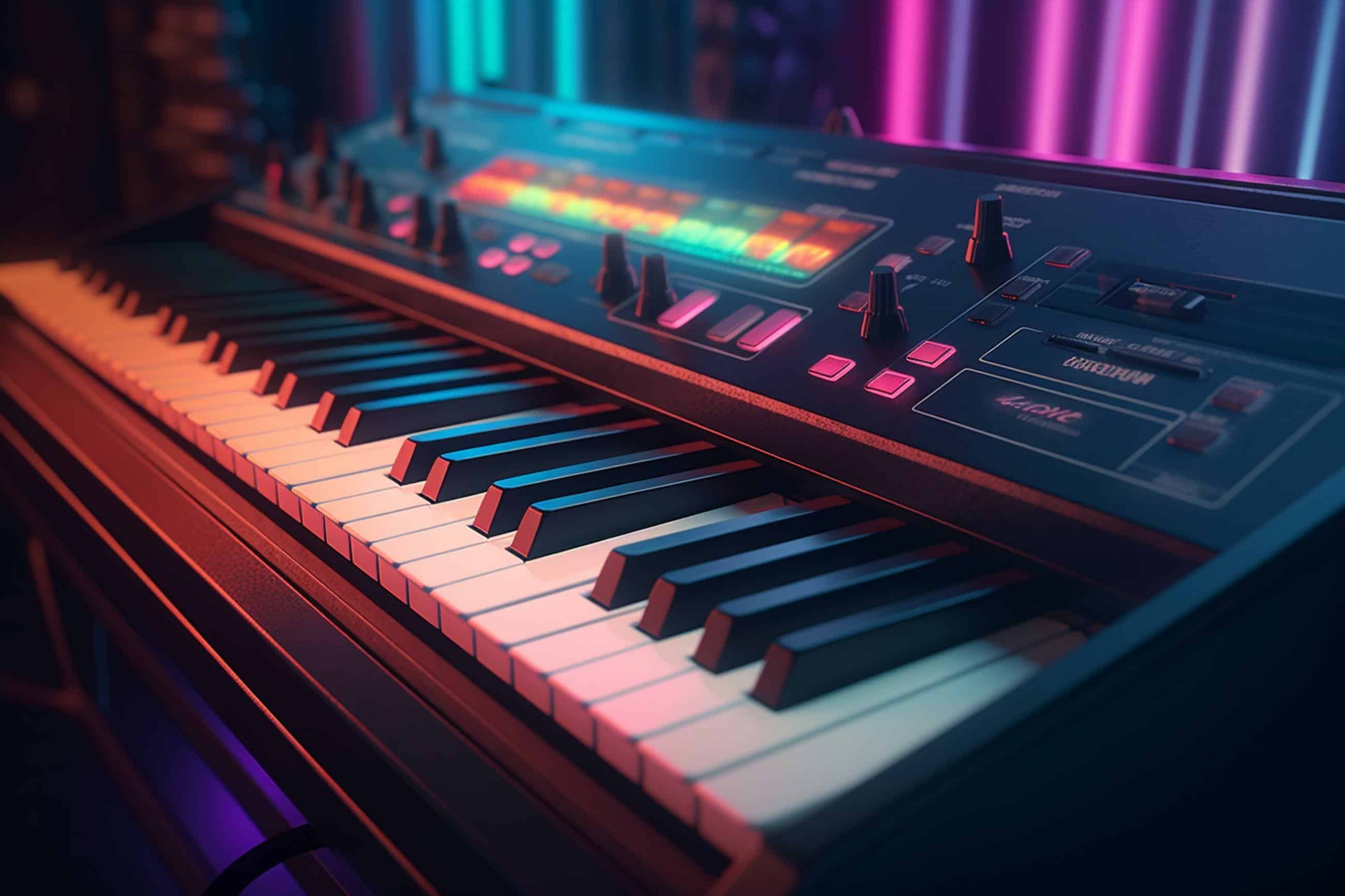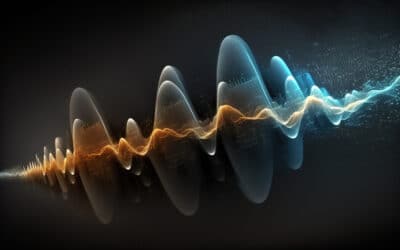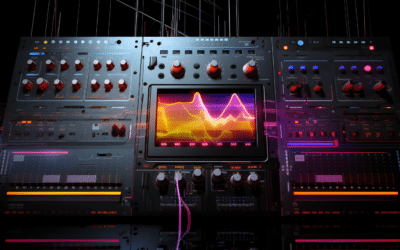A Brief History of String Synths
Think of electronic music and it’s impossible to ignore the role of string synthesizers. One only has to consider the lush ambient string pads in ‘Halcyon + On + On’ by Orbital, or the late great Vangelis’ Chariot’s of Fire and, possibly most famous of all, William Orbit – ‘Adagio for Strings’. Songs for the ages.
String synthesizers have a captivating history that spans several decades. They evolved from early attempts to replicate acoustic string sounds to sophisticated digital emulations of orchestral strings.
In the 1970s, string synthesizers emerged as a response to the growing demand for electronic instruments capable of producing convincing string sounds.
The 1980s witnessed a significant shift with the advent of digital synthesizers and the introduction of sampling technology. Musicians across the board needed something to pad out arrangements, and with the time and money saved using synths, the demand grew rapidly.
Over the next two decades, further advancements in sampling and synthesis techniques led to the introduction of workstation synthesizers. And more recently, we have witnessed an explosion in software synthesizers and virtual instruments. If you want good-sounding strings for your productions, you’ve never been more spoilt for choice than now.
In this article, we run through six of our all-time favorite string synthesizers, in order of when they were released.
ARP Solina String Ensemble
The ARP Solina String Ensemble is a genuine grandaddy of synths. Introduced in 1974 by the Dutch company Eminent BV and distributed in the US by ARP Instruments, the Solina is widely recognized for its distinct, warm string sounds.
The ARP Solina String Ensemble used divide-down technology to produce a full range of pitches from a limited set of oscillators. This was managed with a single oscillator generating multiple pitches that provide rich, ensemble-like string textures. Its character is warm and unique with the swirling strings reminiscent of orchestral string ensembles. It wasn’t long before it was used commercially. Two good examples would be Pink Floyd’s ‘Wish You Were Here’ and ELO ‘Mr. Blue Sky’. Not to mention countless disco records. It was commercialized further when Arturia emulated it with the Solina V.
The Solina’s distinctive sound has been much replicated and sought after, often through sample libraries and virtual instruments seeking that all-encompassing texture. It played a particularly significant role in popularizing string synthesizers and helped shape the sonic landscape of the era.
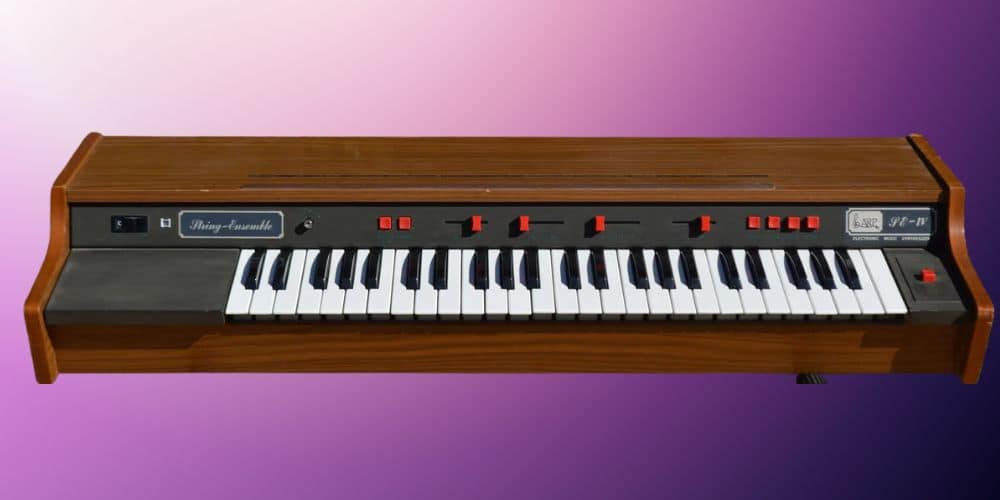
Hohner String Performer Analog String Synthesizer
The Hohner String Performer Analog String Synthesizer, released in 1977, might occasionally be overlooked. That’s strange given the clue is in the name.
The String Performer features multiple sections, including an ensemble section for the string sounds, a solo section for creating lead sounds, and a bass section for producing deep and powerful bass tones.
The ensemble section is the cream of the crop delivering warm and rich string textures, reminiscent of orchestral strings. The instrument offers controls for adjusting parameters such as attack, sustain, release, and ensemble depth, allowing musicians to shape the characteristics of the string sounds to their preference.
If it’s good enough for Kraftwerk, it’s good enough for you.
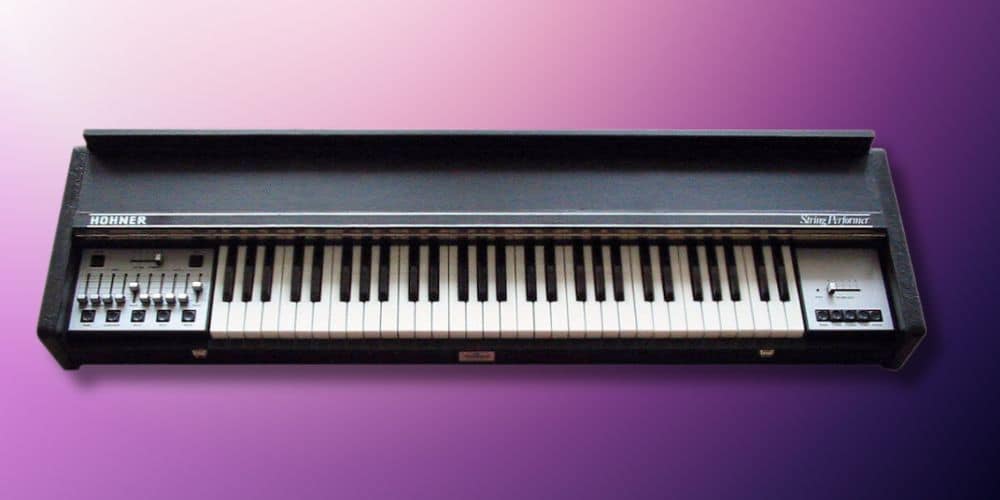
Moog Opus 3
The Moog Opus 3 arrived in 1980, on the heels of the Hohner and heralded a new direction for string synths. Designed by Herbert A. Deutsch, the Opus 3 is an analog 49 key synthesizer. The sounds come in three categories: strings, brass and organ sounds, all having their own filter apart from the organ section. And therein lies the crucial difference – the sound control it offered at the time. Moog’s approach was novel. You’d expect nothing less from the company that first bolted a keyboard onto a synth ten years prior with the Minimoog.
The Opus 3 delivered full control over the voltage-controlled filter, modulation section and chorus depth. It was also armed with an envelope offering control over attack, sustain and decay. At the time, most synths only had attack and decay settings, so the inclusion of sustain gave users greater control.
The Moog Opus 3 provided a polyphonic string section, an ensemble effect, integration of multiple sound sources, and an approachable interface. Bowie used it for strings on “Lodger.” I, therefore, rest my case.
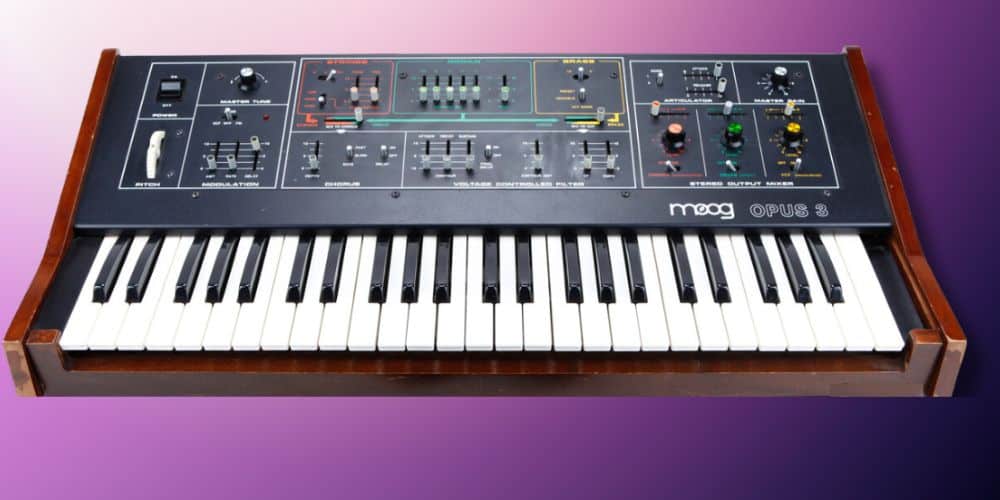
Roland JD-800
It’s easy to get lost in the 70s and 80s when talking about vintage string synths. The 90s had a lot to live up to, but fan-favorite brand Roland delivered the JD-800 with aplomb.
And the synth was aware of its heritage. The introduction in the manual states that Roland’s intention with the JD-800 was to “return to the roots of synthesis”.
The JD-800 embraced a hybrid approach by combining digital oscillators with analog-style filters. This allowed musicians to benefit from the versatility and precision of digital technology while retaining the warmth and character associated with analog synthesis. It bridged the gap between the two worlds, offering a distinctive sonic palette. The JD800 string card that came with 13 waveforms (13!) is now considered a classic. The resell prices on Ebay will tell you as much.
But alas Ebay is not for everyone, whereas Roland Cloud, which houses a digital emulation of the JD-800, is worth a look.
Have we mentioned who used it? Depeche Mode “Songs of Faith and Devotion” anyone?
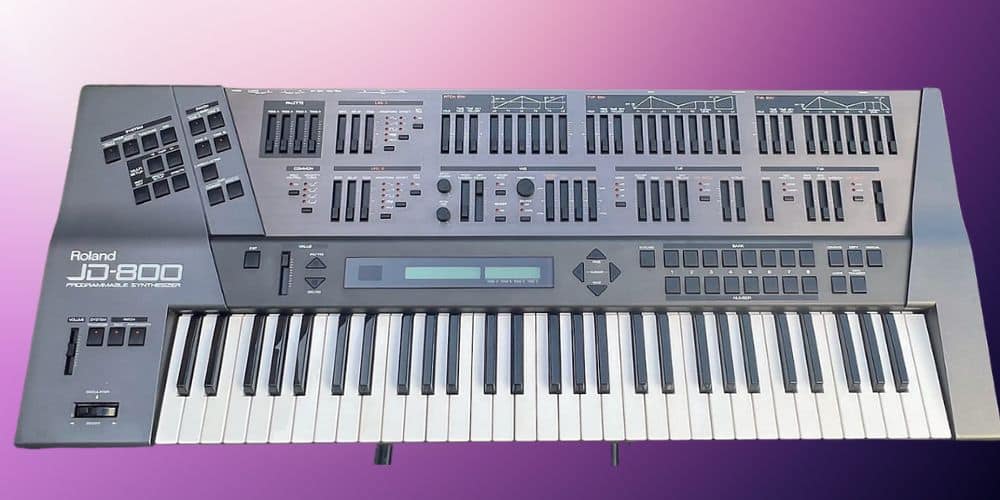
Dave Smith Instruments Sequential Prophet 6
No synth list, strings or otherwise, would be complete without Dave Smith. We’ll spare you the full history–it’s an essay in itself–but when he passed suddenly in 2022, the music world lost a true icon.
The Prophet-6, released in 2015 by Sequential (formerly known as Dave Smith Instruments), offers a versatile subtractive synthesis feature set capable of creating rich, expressive string sounds. Its combination of analog oscillators, analog filters and intuitive modulation capabilities makes dialling in string patches a breeze. Described by the firm as “Vintage with a modern twist” it quickly became an iconic and modern instrument.
With its classic analog architecture, the Prophet-6 delivers lush and evocative string tones. It’s suitable for a wide range of genres and remains a popular choice among musicians seeking authentic and expressive string sounds.
If you’re seeking the sounds of Bonobo, Kaitlyn Aurelia Smith or Trent Reznor, you could do no wrong acquiring one of these. Time to smash that piggy bank open but if the bank is empty, u-he Repro is the closest emulation you’ll find.
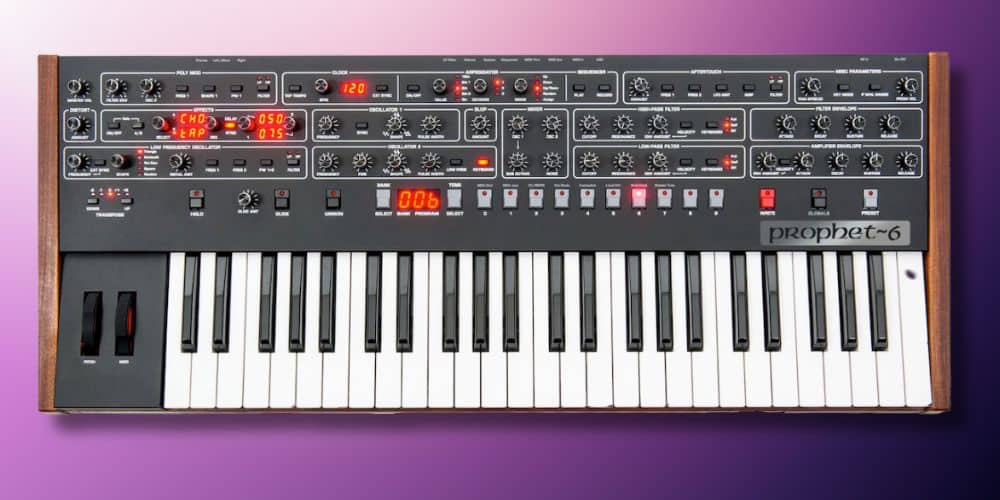
Lunacy Audio CUBE
Many of the string synths in this list are either out of production, out of budget or both. But as we mentioned in the intro, there has been a great development in software synthesizers and plugins.
Lunacy Audio join that club with its award-winning virtual instrument CUBE. With an innovative 3D interface, CUBE allows you to load up to 8 sounds, and its global envelope makes it easy to create evolving textures. And with the Threads expansion pack, it’s great for strings too.
Threads combines solo orchestral strings with futuristic plucked and bowed sounds and processing techniques that blur the line between acoustic and synth strings. The result is a completely different take on string sample libraries.
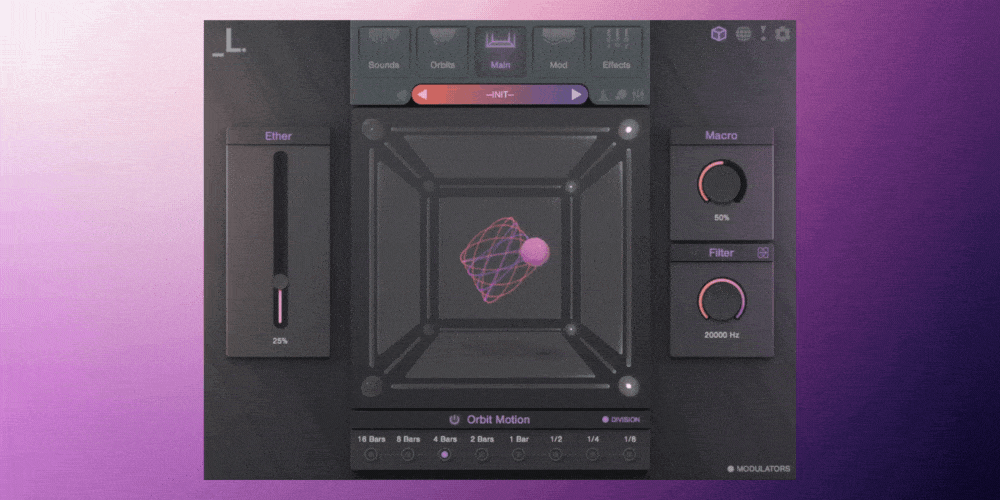
How To Make Your Own Synth String Sounds
While string synths make it easy to dial in lush string arrangements, making your own synth strings does not need to be hard. Here are the golden rules for creating a string patch on pretty much any synthesizer.
Oscillators
When synthesising any sound, it pays to focus on the oscillators, to begin with. To make strings you want to use a minimum of two saw waves or PW wave oscillators. If you add more, make sure to keep the waveform the same. Adding more will enrich your sound but two will be plenty.
Next, make sure to detune them. A good rule of thumb is to detune them the same amount but in opposite directions. For example, detune OSC 1 by 10.00 cents and detune OSC 2 by -10.00. Rules are there to be broken, but this is a good starting point.
Amp Envelope
Imagine what it sounds like if you were standing in the back of a church listening to a string performance. The best way to emulate that is to use the ADSR found in your amp envelope. Here are some classic settings to get you started:
- Attack: Increase your attack time to give your notes a smooth volume swell
- Decay: If you want pizzicato, turn to decay. It will be your friend.
- Sustain: Max!
- Release: Typically for long legato strings you’re going to want a long release time. You’ll want very little for pizzicato.
Filter
All DAWs come with a filter so there’s no need to buy anything. Firstly add keyboard tracking which is incredibly useful when modeling real-world sounds. Think about it, higher frequencies sound brighter and fade faster than lower frequencie keyboard tracking. Using an amplitude envelope you can set it so lower-frequency sounds have a longer release stage than higher-frequency sounds and give your synth strings even more realness. Get this right and it’s going to make a world of difference to your synth string sounds.
Top tip: Spend some time using filter envelope presets or design your own. With a filter envelope, like an amp envelope, you can take full control over the shape and control your sound.
Modulation / LFOs
Modulation is a must. A good place to start is to route an LFO on a slow rate setting to the pulse width depth to give you a chorusing/phasing effect. Another good starting point is to route a separate LFO to the oscillator frequency, which will give you vibrato.
Going further you can route the rate of LFO 2 to LFO 1. This is quite a common trick. Try it, you won’t be disappointed.
Lastly, why not look at assigning an LFO to the pan knob. The goal here is to be subtle. Set the LFO rate to a slow setting so the strings gently move around your stereo field. Often this works best in the higher register.
FX
Take yourself back to standing in that church. What do you hear? That’s reverb and delay (or echo). Strings always sound better with reverb and it’s up to you if you want to drench it in reverb, by playing with the dry/wet amount or applying a subtle plate reverb. Context is key.
For delay, the same is true. It might be your wish to have a delayed sequence of strings, but for lush, almost real-sounding strings, a delay setting of 1/16 or higher with a low mix setting can have a subtle but effective impact on your final sound.
Final Thoughts
And voila! Making synth strings doesn’t have to be cumbersome. Once you’ve got a few things learned you can nurture your inner Vangelis.
With Lunacy’s CUBE and the Threads expansion pack, we’ve combined meticulously-recorded string samples with cutting-edge sound design techniques for futuristic sounds that go above and beyond traditional string synth sounds.
If you already know your way around a synth, you can take CUBE to a whole new level by importing your own synth samples and using the modulation matrix to push it further. If you think of each of the 8 potential sound sources in CUBE as its own oscillator, the world really is your oyster.

